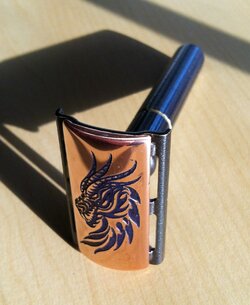That sucks my friend! But all you have done is hurt it's looks a little. Should shave just fine.Thank you
I actually kinda like the look. Use some toothpaste and an old toothbrush, a soft one, and see what happens. Can't hurt any, and you may be amazed at what it looks like when you get done.
Also: you ain't the first person to do this, you won't be the last, and it's hard to get mad cow disease from a razor.
Hint: follow a toddler crawling around on the floor and watch what they eat. It's hard to make humans sick, let alone kill us. At least by bugs!
I can sympathize with your overkill. Ever since I had to look at pond water under magnification in Microbiology for nursing skool I can't swim in a lake. And a swimming pool is also nearly out of the question! So don't feel bad. These yahoos on here have all done stupid in some form or another.
Or they are too chicken to get out of their comfort zone! Remember: to screw up is human! And I'm the most human person on Badger and Blade!








